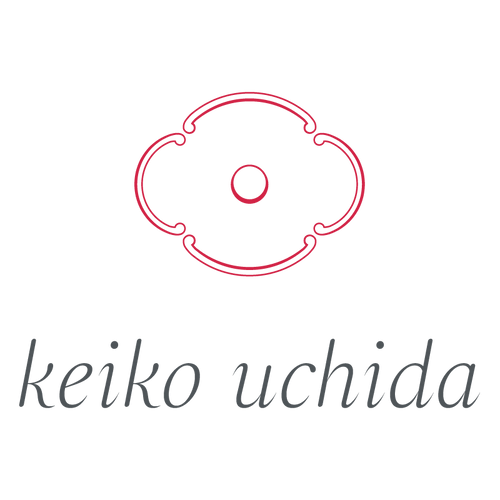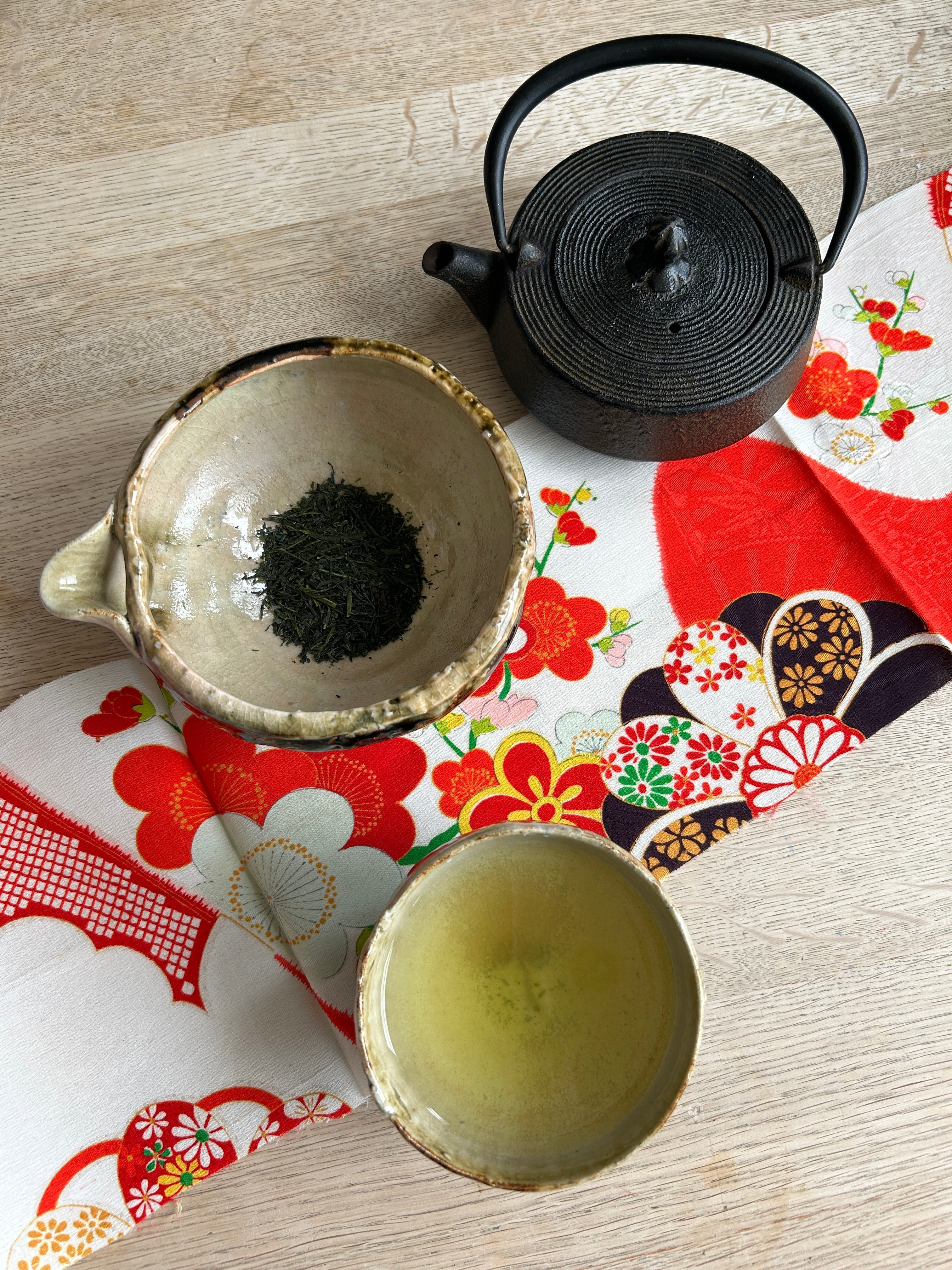I drink quite a lot of tea every day - matcha and green tea as well as black tea. Here at home, and also when I make my regular visits to Japan, where I’m able to taste all sorts of interesting and unique teas, sometimes in a tea farmer’s kitchen, sometimes in a tea factory meeting room. I don’t buy tea on an industrial scale, so I spend a long time tasting and talking to Japanese tea makers and farmers, and I‘ve got to know them well, which is a real privilege. Some of them are very humble, some very friendly and some highly professional. Starting out on this enterprise seven years ago did initially tax my nerves, and I remember when I first approached the renowned Ippodo tea merchants, visiting their extremely elegant flagship store in Kyoto.
We had launched tea from Ippodo earlier than that, but it was quite a different thing seeing them in their historic Kyoto home as opposed to meeting them here in London, in my own territory. It makes me think of the difference between football clubs and how much more difficult it is playing away from home!
I know that experts who work for large tea companies taste teas very quickly, getting through hundreds of different teas in short periods of time. When I do my tasting it is completely different - quite the opposite in fact. I research the tea and the people who are making it in great depth before I set out on my trips, and I spend a lot of time talking to them and tasting the tea. Some of the tea makers are based high up in the mountains and it takes more than an hour’s drive from the nearest public transport, so there is a lot of preparation necessary.
Ippodo tea’s flagship store is in the middle of Kyoto city, so access is easy. However, as a small business owner it still needed a little courage to present myself to them and to set out what I wanted to achieve in London. Normally, Ippodo do not sell their teas to stockists, so the first meeting was a little like a job interview! Fortunately that first meeting in Kyoto was very productive and since then I have been visiting Ippodo in Kyoto every spring, catching up on what has been happening and tasting different teas and wagashi. They always prepare special Kyoto sweets for me, and share some of their amazing knowledge of Kyoto’s historic tea world. They have also been very good at encouraging me to try something different in London too.
I originally come from Tokyo and I don’t have any siblings in Kyoto, but Ippodo always welcome me back to Kyoto! In Japan we think that people from Kyoto are slightly different to those from Tokyo as they have a deep history of culture, and people from Kyoto have an idea that those in Tokyo are always seeking business opportunities and don’t have much knowledge of culture. It’s possibly true that there aren’t so many Zen gardens or traditional buildings or crafts people in Tokyo as there are in Kyoto. But we still have a passion for culture, and we are always happy to learn! In fact, there are such rich traditions in both cities – and all around Japan – and wonderful ways of exploring Japanese culture in so many ways. I remember all my tasting meetings – the conversations, the room settings, the delicious sweets, the many different and wonderful teas, the tea pots and tea bowls, and rows of familiar faces, all of which are a great treasure for me. I am so honored and so very lucky that I can link my business with my passion for tea and ceramics.
Of course you know that I am a matcha lover and I drink matcha tea every single day. You may not know that I also love Sencha and Gyokuro too.
Gyokuro and Sencha look similar to each other, but are actually quite different. Gyokuro tea is grown in full shade like matcha tea, and is normally harvested once a year, in spring. Sencha, on the other hand, is grown in direct sunshine, and can be harvested by tea farmers a couple of times a year. However, because global warming has made direct sunshine more harsh and fierce in recent years, many top Japanese tea farmers have been using shading materials to protect the tea leaves and produce a gentler flavour, resulting in maintaining a top grade Sencha, which is harvested only once or twice a year.
If you would like to gain the maximum health benefit of anti-oxidants, Gyokuro is a better choice than Sencha. Gyokuro and matcha contain anti-oxidants at a similar level, as in both cases the leaves are grown under full shade. Some people find that matcha is just too different from their normal black tea experience. In which case Gyokuro is a good alternative, if you are aiming to gain more anti-oxidants. Gyokuro is the best grade of green tea and doesn’t require special tools like a bamboo whisk.
In terms of the brewing process, it is similar for Sencha and Gyokuro, and I prefer tea leaves to tea bags, so it is a nice idea to get a good sized Kyusu tea-pot to brew your Gyokuro or Sencha. We actually have a suitable selection of Kyusu tea-pots on our website. These should allow the leaves to swim nicely and freely around and create a great taste.
Brewing Gyokuro only requires 50 degrees of hot water for around 90 seconds. For Sencha I would recommend 80 degrees of hot water for 60 seconds, to achieve nice levels of umami and sweetness. We are going to organize a special tasting workshop for Sencha and Gyokuro in September, and it would be great to see you in our studio then.
Now that Summer is beginning to fade away, we are slowly shifting towards September. It’s a time when some of you might be starting a new kind of life. If you begin to feel a little stressed, I would recommend taking a 15 minute tea break. With your favourite tea-pot, tea cup and choice of tea, you can relax with great contentment!
Have a peaceful and wonderful rest of summer.
Lots of love
Keiko

